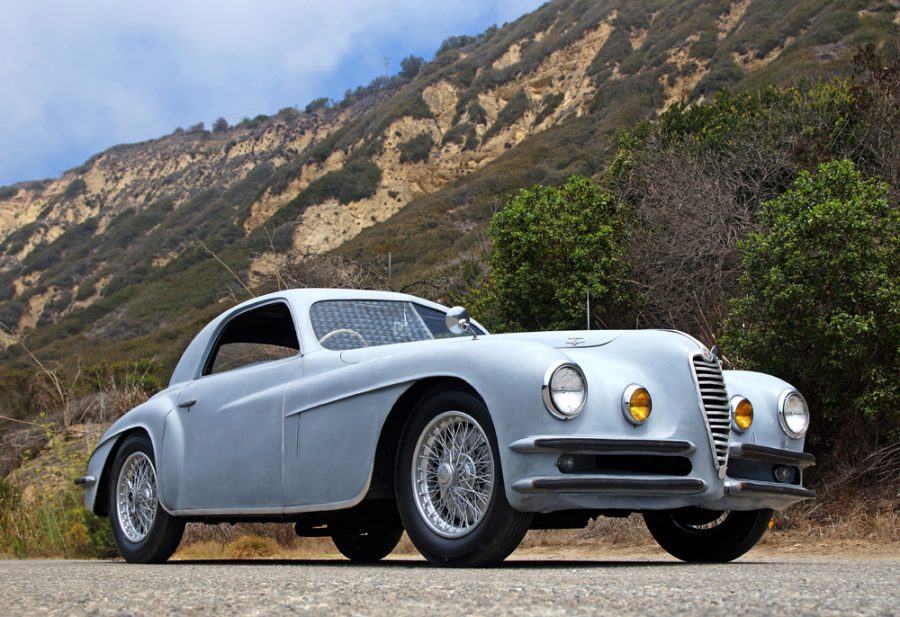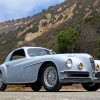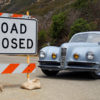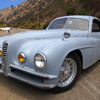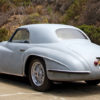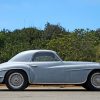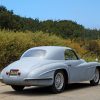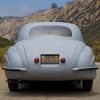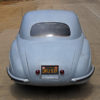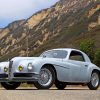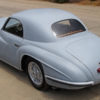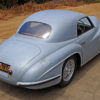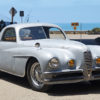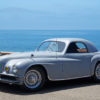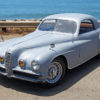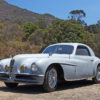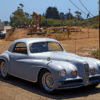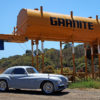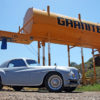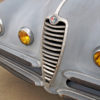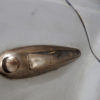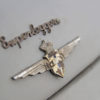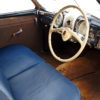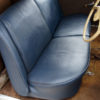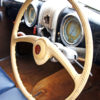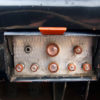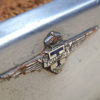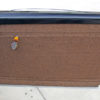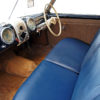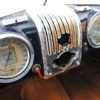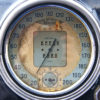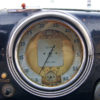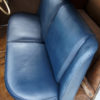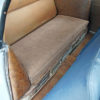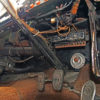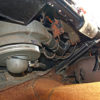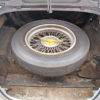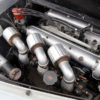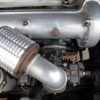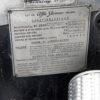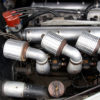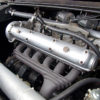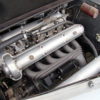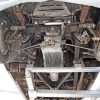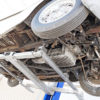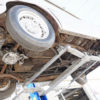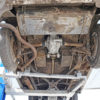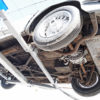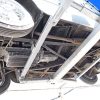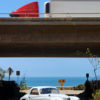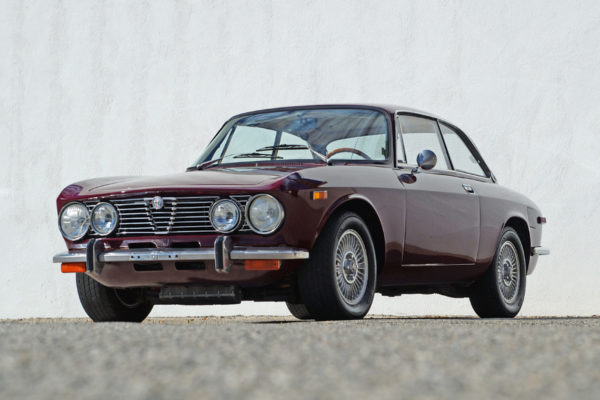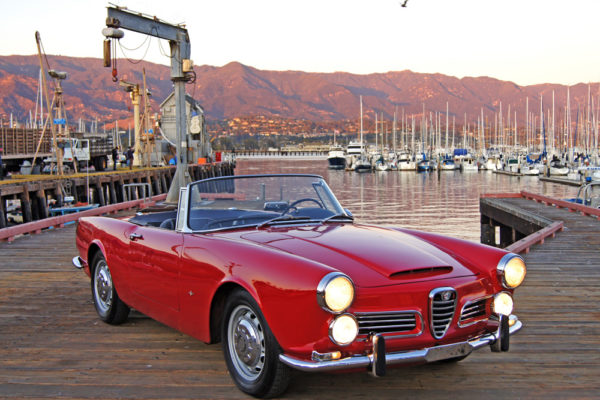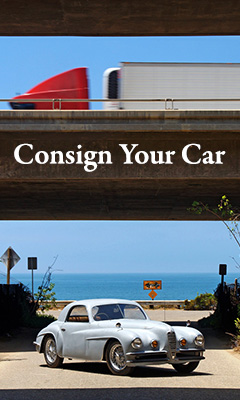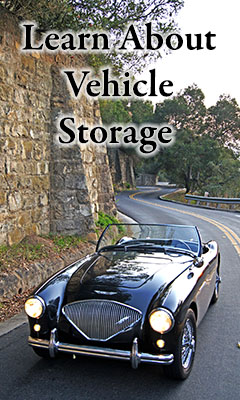Description
Developed under the esteemed guidance of Vittorio Jano and Wilfredo Ricart, Alfa Romeo introduced the 6C 2300 and 2500 to great acclaim amidst the whisperings of war. Despite the inescapable escalations occurring throughout Europe, they aggressively and successfully campaigned the cars, garnering an extraordinary list of victories and podium finishes, notably including first and second place honors in the 1937 Mille Migla and 1-2-3 finishes in the 1937 Six Hour Targa Abruzzo at Pescara. An overall win in the 1950 Targa Florio signaled to their competitors that Alfa Romeo was to remain a serious racing contender following the cessation of World War II.
A significant progression on its illustrious older pre-war siblings, the post-war 6C 2500 Super Sport introduced a dual overhead cam engine and independent suspension on all four corners. Aided by three Weber carburetors, the 6C 2500 SS put out 110hp despite the low octane fuel available in Europe following the War. The relatively stiff frame and independent suspension delivered this power to the road much more effectively than the cart-sprung, solid axle suspensions outfitting most cars of the period. This advancement allowed for a much less taxing ride quality, benefitting both Mille Miglia competitors and the wealthy private owners fortunate enough to acquire the exclusive cars amidst the rubble of Europe and its economies.
The 6C 2500 SS’s advanced engineering, structural and mechanical resiliency, and ceaselessly elegant, luxurious and ahead-of-its-time design ensured that the cars were highly sought after when new, just as they remain in today’s ever-appreciating market. Three variants were available following the War: an open car from Carozzeria Pininfarina and two closed versions, one built in-house by Alfa Romeo and one by Carozzeria Touring of Milan. Especially compared to the somewhat bulky and bland Pininfarina model, the cars built by Touring are considered by many to be the most aesthetically appealing, and it’s not difficult to understand why. Built on the desirable 2700mm “short” chassis, the cars have gracefully sloping, rounded lines while retaining a visually strong and aggressive stance, a dichotomy that very few Gran Turismo designs were/are able to manage.
This car, S/N 915734, was delivered by Alfa Romeo to Touring “approntamento del telaio” (rolling chassis ready for body) on February 12th, 1949. Ordered new by the owner of an esteemed a Milanese fabric manufacturer and men’s fashion house (Cotonificio Vallesura S.p.A.), the interior was originally upholstered with materials provided by the owner and installed by Touring at his direction. The completed car was delivered to the original owner on July 30th, 1949 and he enjoyed the car for the ensuing four years. At that point, with the likely aid of Alfa Romeo, ownership transferred to Frank Griswold, who summarily imported the car to New York in 1953.
An ambitious American race car driver, Frank Griswold purchased the Count Villapadierna Alfa Romeo P3 in 1939, winning the 1940 New York City World’s Fair road race of 1940 in the car. His career took a required detour during the War, but when road racing resumed in the United States in 1948, Griswold won at Langhorne Speedway and at the U.S. Grand Prix at Watkins Glen in an Alfa Romeo 2900 MM Coupe. Due to his racing success and his long association with the marque, he negotiated exclusive distribution for North America for Alfa Romeo automobiles, as well as for Borrani wire wheels, Weber carburetors and a handful of other European parts manufacturers. Because of these connections it’s thought that he was offered S/N 915734 and likely personally owned the car following its importation to the States, as no additional owner of record can be found until 1959. At that time, it is noted that ownership transferred to Fred Cantor, who at some point drove the car west to California while relocating his family, and the car has remained here ever since.
Following a significant engine failure in 1971, the car was brought to Jay’s Imports, a San Leandro, CA foreign marque specialty shop. Too costly to repair for the owner at the time, the damaged original engine (No. 915808) was removed and the car was fitted with a replacement engine (No. 928105), also from a 6C 2500 Super Sport. An employee of Jay’s named Norman G. Snart saw an opportunity and negotiated the purchase of the car upon completion of the work. A true enthusiast, over time Mr. Snart would build a modest collection of significant Italian automobiles to keep the Super Sport company, including a Ferrari 342 Cabriolet and 330GTC. He and his wife Valerie were active in California’s Italian car community, with Mr. Snart eventually becoming the president of the Alfa Romeo Association of Northern California. While occasionally driving the car, he started a passive restoration in the 1970s, a restoration to which he never truly committed. Instead, he merely prolonged the car’s running and driving “survivor” condition throughout his tenure of ownership – 42 years in total – until we were able to acquire the car in 2012.
While Mr. Snart never got around to restoring the car as he had planned, he always took exceptional care to preserve it, and consequently it is in very good structural order, especially in terms of corrosion. For an unrestored 64-year-old car, the floors, frame and body support substructure are all in fantastic condition. The same can be said of the body, which is exceptionally straight, largely free of filler and will only require some minimal metal work in the front valence and adjustment of the panel match at the bottom of the doors to be ready for a concours quality paint job. That said, we’ve enjoyed driving the car in its current state, a complete non sequitur at local automotive events. I’m sure more than one of the car’s next potential owners will agree that there’s something rather appealing about the unconventionality of bombing around in a completely unfinished, serious investment-grade car that most of the general public has never heard of, let alone seen in person.
Over the last year we have spent considerable time and resources improving upon the car’s original mechanical condition. The cooling system proved to be the most significant and time-consuming undertaking, the result of which is a completely restored and rebuilt radiator, along with all of its supporting components. The original water plugs to the engine block were deteriorating, so we engineered and machined new aluminum engine block plugs for the car. All three original Weber carburetors were removed and rebuilt and, just prior to our ownership, Jere Brown had serviced the brakes and rebuilt the original water pump. The engine’s compression is outstanding, the original gearbox shifts effortlessly without grinding or hesitation and the car has excellent road manners, making it is a truly strong running and driving example.
From a restorer’s perspective the car is an ideal candidate, due in no small part to the fact that the car is quite complete. Dozens of virtually impossible to locate or replicate parts all remain with the car, including the exterior door handles, window surround trim, ornate interior switchgear, gauges, factory steering wheel, Simun heater, fuse box cover, ash trays, window glass, air cleaner housings, mechanical fuel pump, etc. etc. Included with the sale (but not currently installed) are the sun visors, headliner bows and the license plate light housing. Additional spare parts include an extra side mirror, extra cast bumpers (damaged), extra headlights and bezels, miscellaneous spare engine parts and various mechanical parts such as distributor caps, all of which will likely prove helpful during a restoration.
Representing the very best in rare, unrestored, investment-grade post-war cars, this early coachbuilt 1949 Alfa Romeo 6C 2500 Super Sport is an extraordinary opportunity for the automotive investor or restorer. Currently running and driving, extremely solid and exceptionally complete, the odds of ever again finding a car in this condition grow slimmer by the day. And that’s for good reason. A similar Touring bodied 1950 example just sold at the Gooding and Co. 2013 Pebble Beach Auction for $814,000 USD, signaling that the market has decided that immediate post-war Alfa Romeos are beginning to join the ranks of their astronomically priced pre-war brethren. Once restored, the car is sure to provide considerable investment upside and would be a guaranteed entrant in all of the world’s most significant automotive events. In the years to come, we’d love nothing more than to see S/N 915734 at Villa d’Este or crossing the finish line on the Mille Miglia, and we can think of no better example to realistically achieve those lofty goals.

